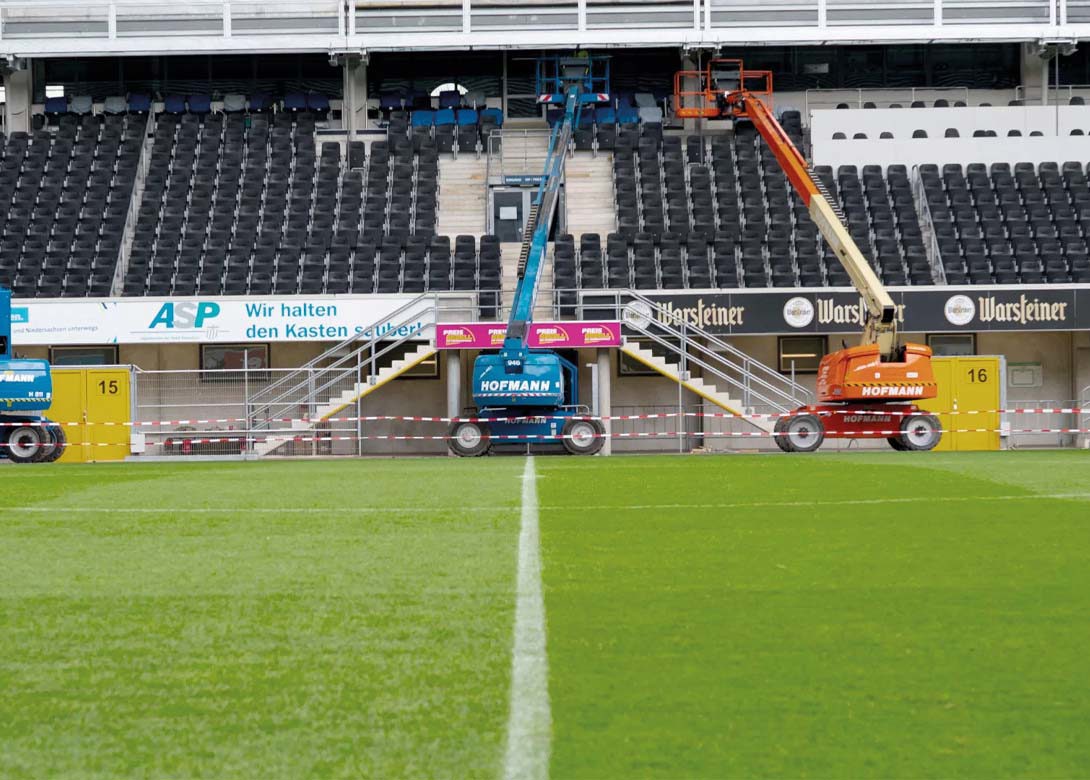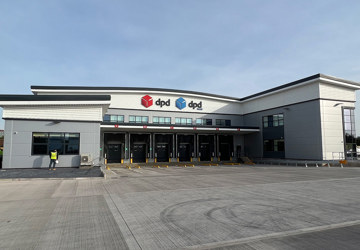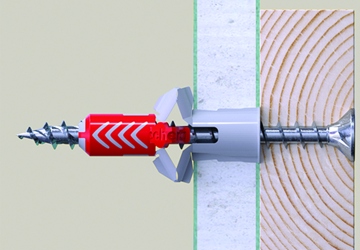

Fan safety in football stadiums has come a long way in recent decades, yet collapses and accidents still occur. When Bernhard Baumhus was tasked with building a stand for German football club SC Paderborn 07, it was integral to the design to find an optimal bolting solution.
Back in 2019 Paderborn’s home ground – the Benteler Arena – needed to be upgraded and expanded by some 2,000 seats to a 15,000 capacity. Steel construction company Bernhard Baumhus GmbH got the assignment and was only given three weeks over the pre-season to complete a new grandstand. As with all modern football stadiums, safety is paramount with strict regulations ensuring spectators are protected against fire or collapsing stands.
While German football fans’ tendency to jump up and down in unison can create an incredible match day atmosphere, it also adds extra strain to stadium structures. Bernhard Baumhus’ engineers calculated that during a match the new stand would be subjected to around six vibrations per second. If not properly secured, the consequent dynamic load could cause bolts to loosen.
A falling bolt or nut can lead to severe injuries for the spectators. If the load bearing capacity of the structure is affected, the consequences can be even more catastrophic.
Such accidents are unfortunately not uncommon in world football. As recently as January 2020, the roof of a stadium in St Petersburg, Russia, collapsed killing a construction worker. In 2019, a large section of the roof of AZ Alkmaar’s stadium in the Netherlands collapsed due to strong winds, fortunately not injuring anyone as the stadium was empty at the time.
A simple yet highly effective solution
Bolted connections are always critical in steel construction. They can either be bolted or welded, but with changes in production methods and automated processes for drilling holes, bolting has become more widespread. There are also different types of fasteners, however, after exploring the various options available and witnessing a Junker test conducted by Nord-Lock, Bernhard Baumhus elected to use Nord-Lock steel construction (SC) wedge-locking washers as they were the only washers that could be used for all common bolted connection in steel construction.
The proven Nord-Lock principle prevents the bolt from coming loose and the Nord-Lock SC-washer pairs have special chamfers on the inner diameter, on both sides, to ensure an optimal contact surface between the bolt and the washer. Therefore, the washers can’t be installed upside down. The bolt is also secured using a plus tension and not friction.
Compliance with relevant regulations
Bernhard Baumhus was confident that the SC-washers would be able to withstand vibrations and prevent loosening. Another significant advantage was that independent institutions have approved Nord-Lock washers for their use and effectiveness in construction applications. This led to different national technical approvals and European Technical Assessments (ETAs).
Nord-Lock points out that even if SC-washers are used together with HV sets, it is possible to replace the original washers and still comply with the current legal framework. No significant design changes need to be made.
“Designed to fit both HV and HR bolts and nuts, Nord-Lock Steel Construction (SC) washers are approved for use with HV sets and can be used as a direct replacement for standard plain chamfered washers (EN 14399-6),” explains Nord-Lock Group. “The washers are quick to install and remove using standard tools and the locking function is not affected by lubrications – helping to prevent any loosening caused by vibration and dynamic loads.”
Nord-Lock adds: “Today, building and construction companies throughout Europe can rest assured that using Nord-Lock securing washers means they, by default, comply with the European Union’s rigorous safety and quality requirements as Nord-Lock can also offer securing washers with CE Marking.”

Having spent a decade in the fastener industry experiencing every facet – from steel mills, fastener manufacturers, wholesalers, distributors, as well as machinery builders and plating + coating companies, Claire has developed an in-depth knowledge of all things fasteners.
Alongside visiting numerous companies, exhibitions and conferences around the world, Claire has also interviewed high profile figures – focusing on key topics impacting the sector and making sure readers stay up to date with the latest developments within the industry.





